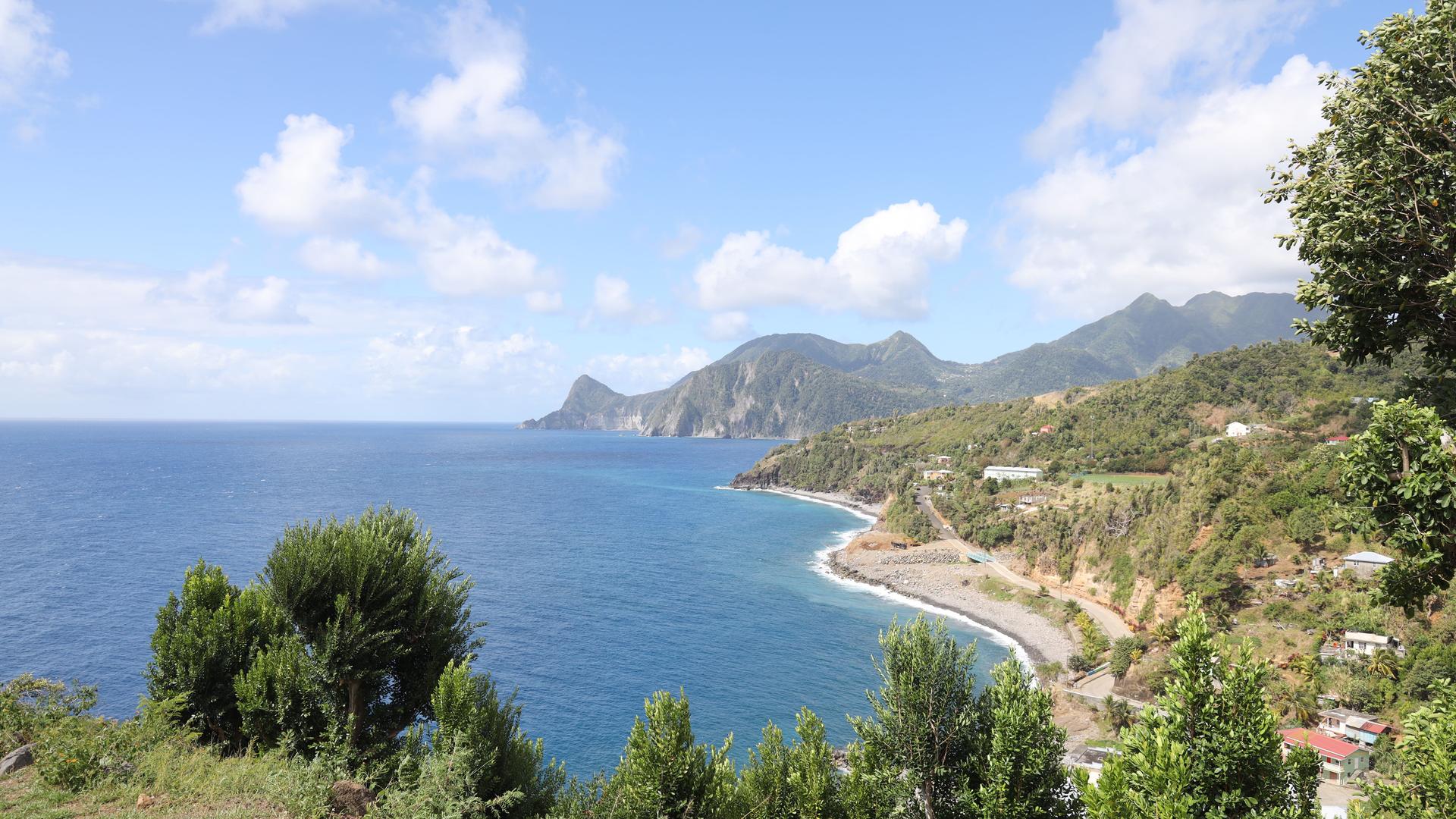Dominica’s ambition in the age of climate change outstrips its small size. The nation, roughly the size of Austin, Texas, sits on the string of Caribbean islands stretching from Puerto Rico toward South America. Its 70,000 residents live right in the middle of hurricane territory.
In September 2017, Hurricane Maria devastated the country, killing 65 people, damaging some 90% of homes, wiping out crops, infrastructure and more than twice the country’s gross domestic product overnight. The island, heavily forested and largely green, was stripped of its leaves. Homes clustered along the coast were battered by winds and storm surges. The lush, forested interior, formed by a backbone of active volcanoes into a terrain of steep peaks and valleys, suffered landslides that cut communities off from each other for weeks. Rivers swelled, overwhelming homes built on their banks and sweeping them off to sea with families still inside them.
Related: We’re launching a new climate change solutions segment. Here’s why.
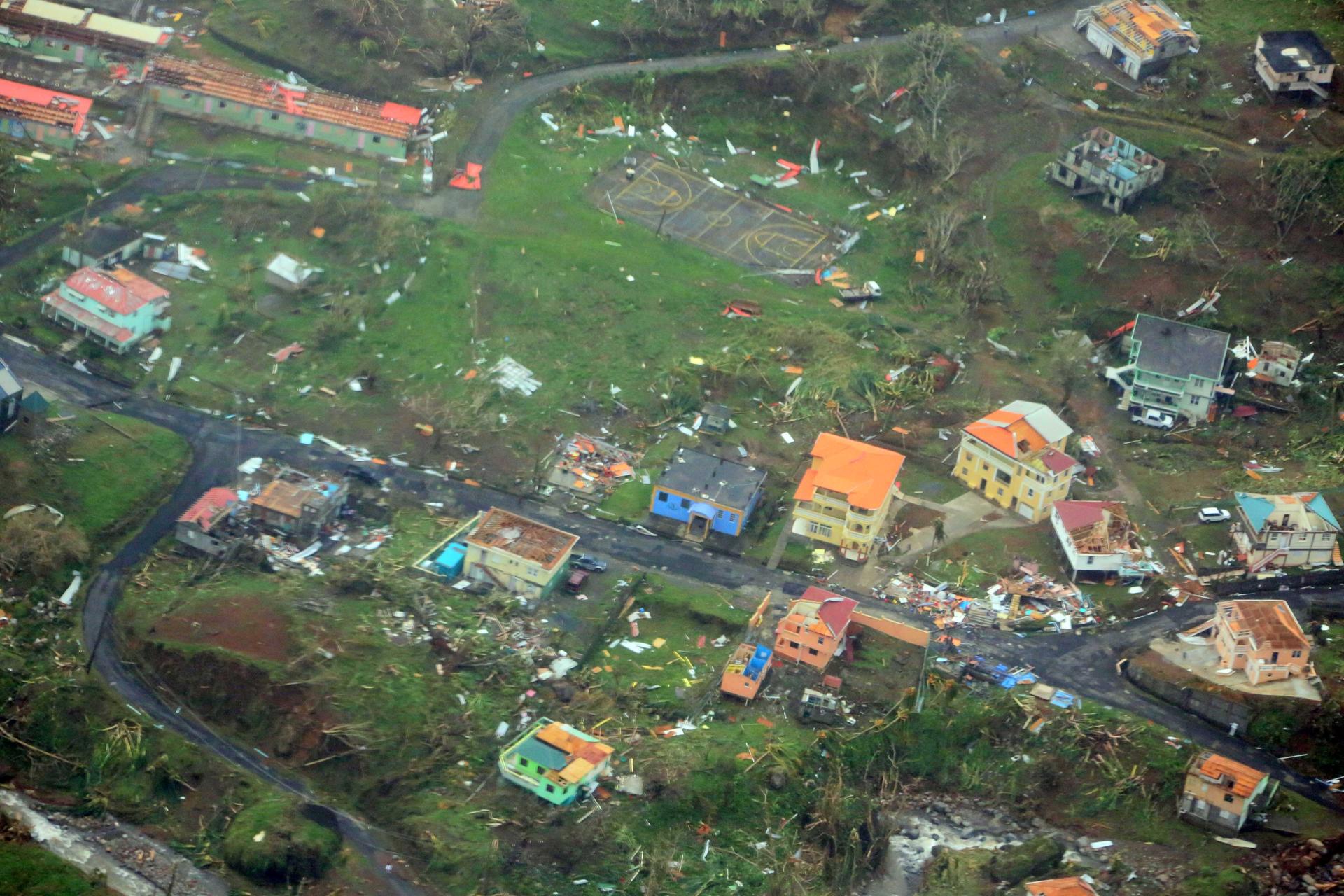
Two and a half years later, cleanup in Dominica is largely finished, but rebuilding continues. About half of the 12,000 homes that were significantly damaged across the island have been repaired by the government or non-governmental organizations, and about 1,000 new homes have been built to replace about a fifth of those completely destroyed, according to the government. Signs of that rebuilding are apparent. Final construction on damaged hospitals and health centers is still underway. Caution barrels mark the edges of mountain roads that have crumbled away and await repair.
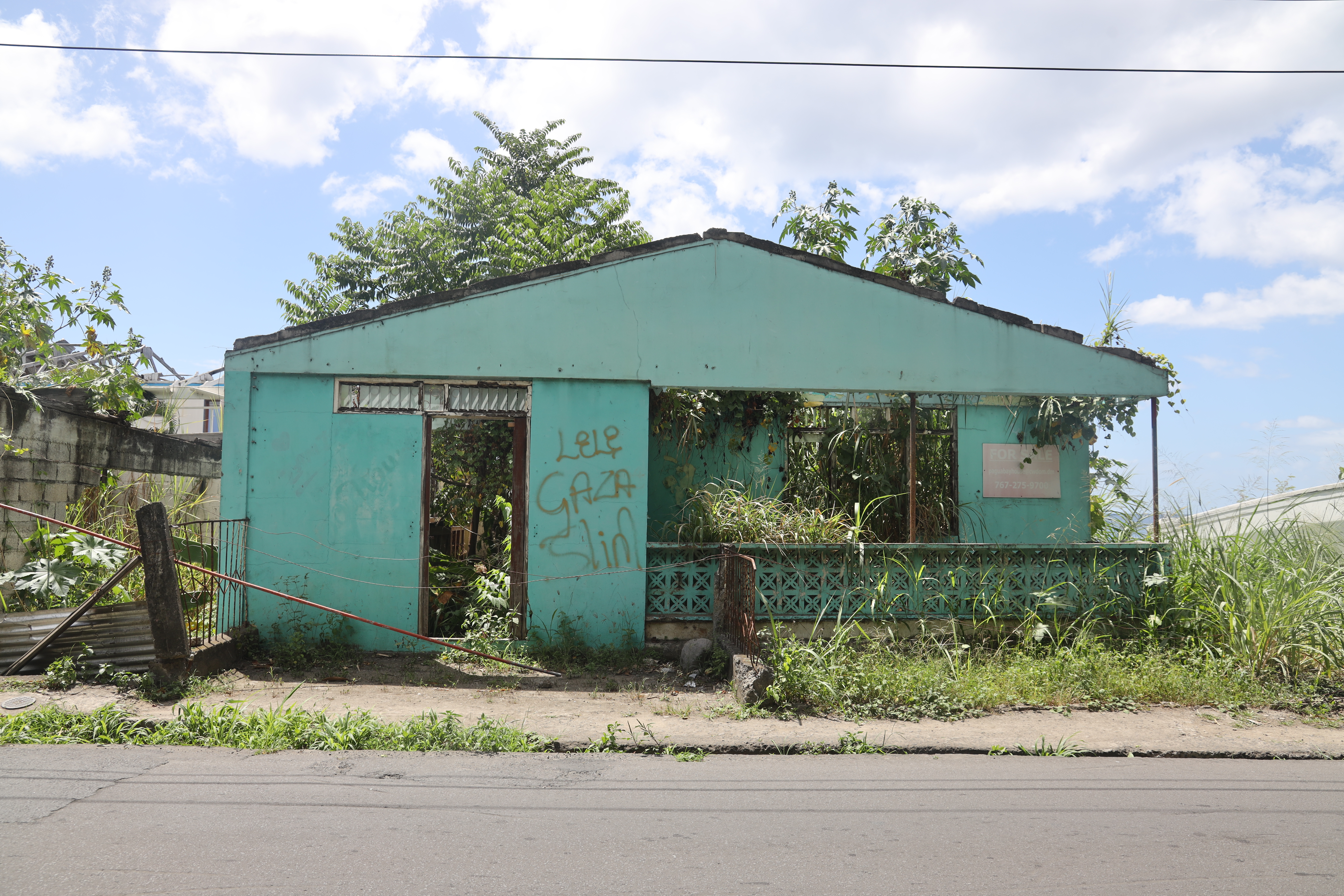
But the new direction the island is working toward is also visible. Billboards around the capital advertise Dominica’s efforts toward resilience and urge residents to read updated building codes online. More roofs, contractors and locals say, are being built with concrete designed to withstand heavy winds better than galvanized metal. Work on a small, geothermal plant is soon to begin, and communities around the island are preparing themselves for the upcoming hurricane season.
These changes are signs of Dominica’s ambitious new national goal — to become the world’s first “climate-resilient” country. That goal emerged just five days after the storm; Dominica’s Prime Minister Roosevelt Skerrit made it to the United Nations General Assembly in New York and asked for help creating a new era of green economic development.
“I come to you straight from the front line of the war on climate change. We as a country and a region did not start this war against nature. We did not provoke it. The war has come to us.”
“I come to you straight from the front line of the war on climate change,” he said. “We as a country and a region did not start this war against nature. We did not provoke it. The war has come to us.”
As warmer temperatures supercharge storms, Skerrit asked for help, later saying his island “will shine the torch for others to follow.” That goal got attention — and money. About $300 million from international donors has flowed in so far out of some $900 million promised after Maria.
Related: ‘More waste, better taste’: This Garbage Café offers food in exchange for plastic
“The intent of Dominica to move towards climate resilience as opposed to simply looking for aid once it has had an impact was something that we found very attractive,” said Richard Carter, who leads the climate change and disaster risk program in the Caribbean for the Department for International Development, the UK’s development arm.
As Dominica rebuilt, it had a question to answer.
“We talked about Dominica becoming the world’s first-time resilient nation, but what does that mean?” said Pep Bardouille, who was tasked with answering that question as the CEO of the Climate Resilience Execution Agency for Dominica, or CREAD.
Bardouille, who has 20 years of experience in international development and consulting at places such as the World Bank and McKinsey, was hired to head the agency a little more than a year after the storm. Her team’s mandate: baking climate change resilience planning into every function of the government within four years. The team has set a series of targets for 2030, including getting all the country’s electricity from renewable sources, making sure main roads are passable and power is largely working within three days of a disaster. Her agency will soon release a report with a plan on how to reach these targets, and how much it will cost.
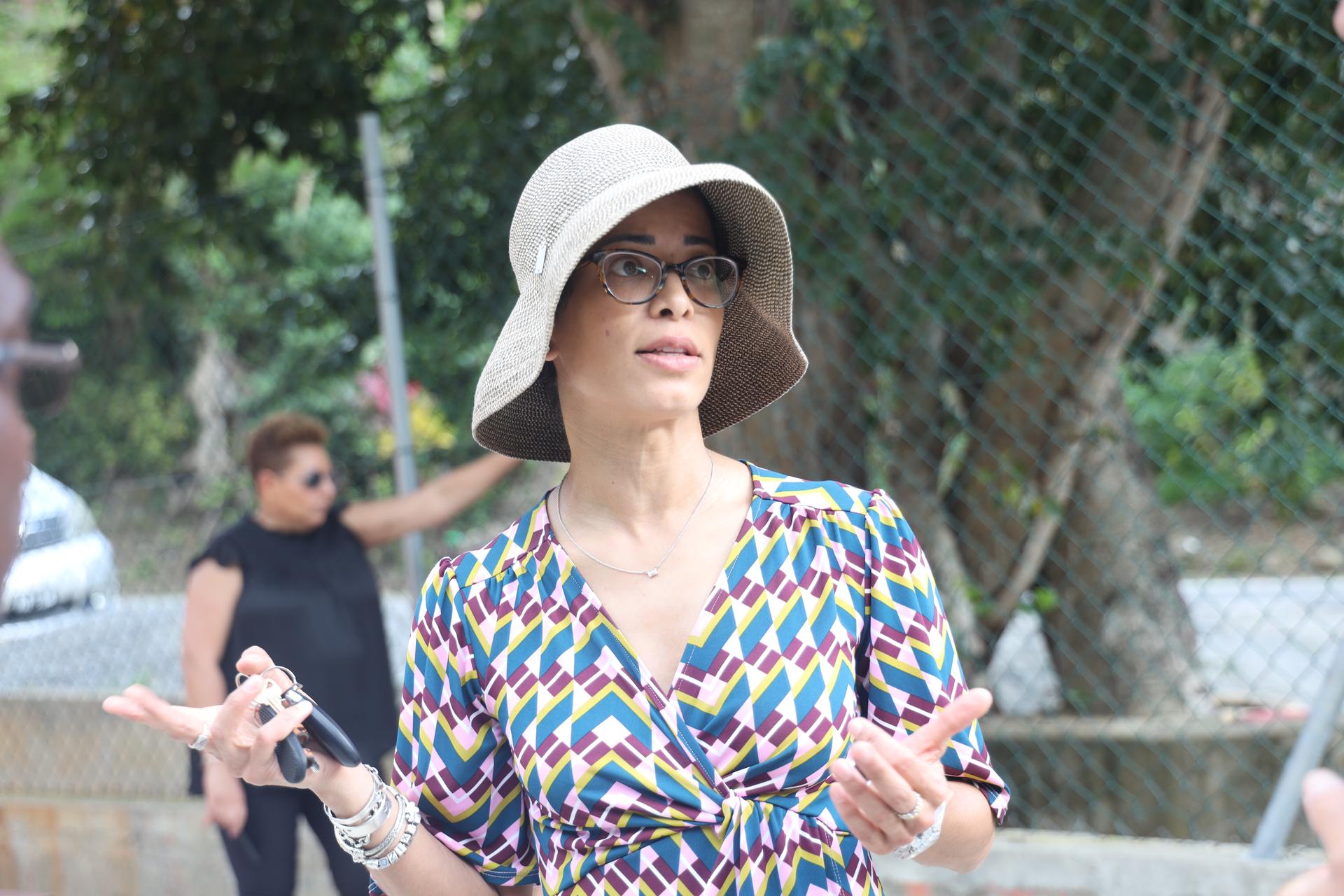
“I think we’re very proud that that’s been done because as much as it can be viewed as a report or a piece of paper that sits on a shelf, it’s actually already guiding the journey of line ministries,” Bardouille said.
Experts say this coordinated approach to climate change planning even as a country rebuilds is unique in the region. What’s also unique, Bardouille said, is that her agency is looking beyond infrastructure.
“Typically, after a climatic event or a natural disaster, there’s a focus on building back better. How do we make roads indestructible, et cetera?” she said. “However, we’re looking at resilience from a holistic perspective.”
By holistic, she means that part of her agency’s mission is to build “collective consciousness” in Dominica, ensuring that everyone on the island understands the environmental risks they face and what they can do to protect themselves and their communities. One of the new targets Bardouille is most excited about is a call for communities to have enough water, power, food, communications and basic health care on hand to be able to survive for 15 days after a natural disaster if they’re cut off from the rest of the island. It’s a goal stemming from a clear need — in some communities, it took that long for residents to clear landslides and reconnect with nearby communities after Hurricane Maria.
Related: Reviving traditional fire knowledge in Australia: ‘Fire is something we live with’
CREAD’s holistic approach also means building a stronger economy, one of the pillars of their resilience planning.
“If your roof flies off, and you don’t have any money in your bank account, you’re not going to be particularly resilient.”
“If your roof flies off, and you don’t have any money in your bank account, you’re not going to be particularly resilient,” Bardouille said.
Two major institutions on the island, a local brewery and a university, decamped after the hurricane and haven’t returned. But oceanside bars, guest houses and restaurants are humming. CREAD has helped get funding for cocoa farmers to replant their relatively resilient crop. And the government is building a processing plant and hosting trainings to help farmers boost the quality — and price — of their cocoa beans and cocoa products.
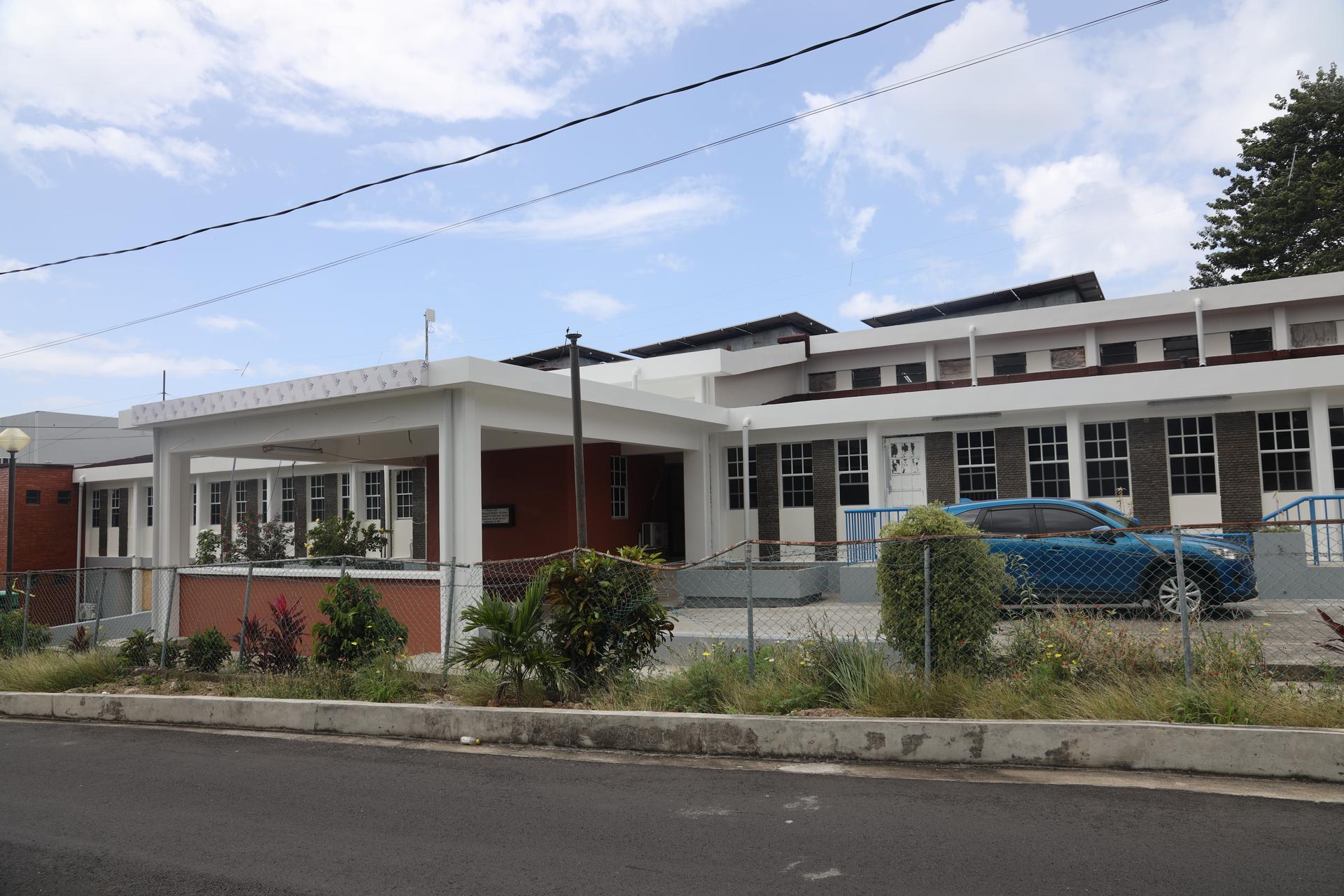
On the island’s north end, in Dominica’s second city of Portsmouth, a hospital is being retrofitted through an initiative of the World Health Organization to operate more efficiently and keep running when the electrical grid goes down. On a recent visit, Christopher John from Argo Development Studio pointed out a solar array and large rain barrel on the roof.
“We also have a battery backup system that will allow that energy to be stored and can be then used through the hospital over a three day period,” John said.
It will be the eighth hospital or clinic on the island with solar power when it’s done, according to a government official. Across the island, nearly everyone in Dominica knows and understands the need to build back stronger, more able to withstand increasingly strong storms. Bardouille counts this public buy-in as key. But there’s also a lot of skepticism around the specific goal of becoming the first climate-resilient nation. Many see it as unrealistic, or all talk and no substance.
“To me, nothing has really changed.”
“To me, nothing has really changed,” said construction worker Mervin Richards.
Related: Climate change will make animal-borne diseases more challenging to predict
He knows the country has big goals, but hasn’t noticed any changes on the ground to how rebuilding is happening — other than more individuals asking for concrete roofs.
“I think that’s the ironic thing about this whole climate resilience effort,” Richards said.
It would be hard to overstate how big of a challenge Dominica has assigned itself. The country’s resilience plan calls for 90% of the island’s houses to be built to resilient standards by 2030. The government updated its building code post-Maria, but officials admit enforcement is a challenge. Contractors say it’s nonexistent.
Another target is to ensure that people living in particularly vulnerable places relocate to safer areas. But in at least one community where relocation has been recommended for years, and where power, water and communications were cut off during Maria and not yet restored, some people have refused to leave. Home will always hold a powerful draw. Dominica’s power company has said it would be prohibitively expensive to bury its power lines, the best way to prevent outages during storms. Preparing for the increasing risks that climate change will bring is hard anywhere, and that’s especially true in places where the population is concentrated on the coast.
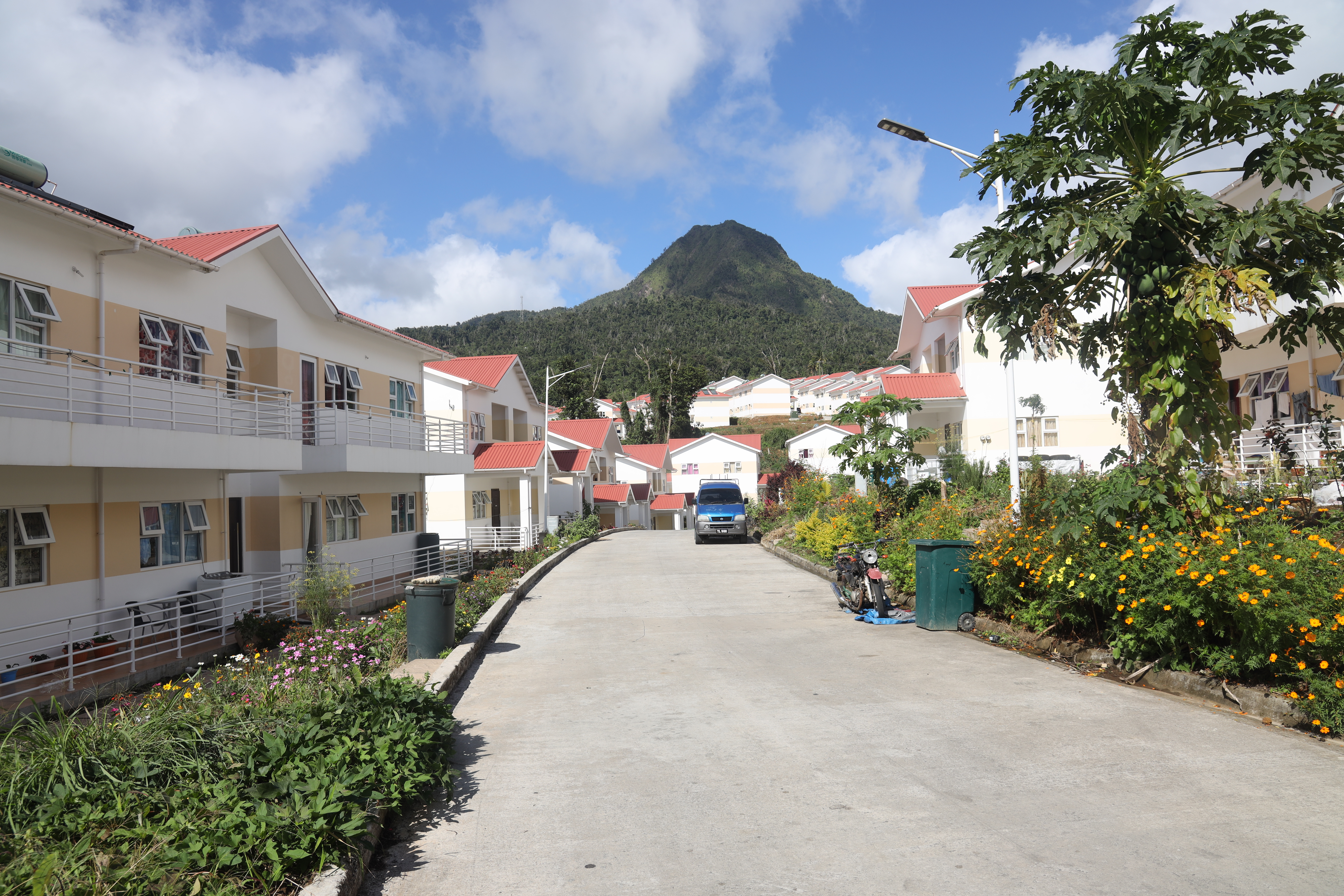
“To be a resilient country, in my opinion, everything needs to be 20 feet from sea level, and we’re not.”
“To be a resilient country, in my opinion, everything needs to be 20 feet from sea level, and we’re not,” said Simon Walsh, the project manager for a small local foundation called Resilient Dominica.
He spoke from a cheerfully painted school in the fishing village of Soufriere, which his foundation recently rebuilt complete with solar panels, a rain barrel and resilient construction techniques like a concrete roof. But he approves of the country’s goal to become the first climate-resilient nation.
Related: A common fertilizer can cause explosions. Uneven regulation puts people at risk.
“Is it a realistic goal? I think it’s a good goal,” Walsh said. “Are we going to hit those exact measures, maybe not. But at least we’re aspiring to be there.”
Carter, from the UK’s development arm, said part of the reason it’s funding Dominica’s resilience work is so other countries can learn from what they’re trying.
“We feel that this can actually teach very important lessons for the rest of the Caribbean at the very minimum,” Carter said. “We also have a strong interest in the South Pacific, where they’re exposed to typhoons just like we are here.”
At her office in the capital of Roseau, Bordouille bristles at the suggestion that her team’s goals may be too ambitious.
“I think that there is a mindset or a perspective globally that small countries should not aspire, that developing countries should not aspire, that these nations are too dysfunctional to achieve anything,” she said. “And I actually take issue with that.”
Dominica has abundant freshwater, she points out, enough geothermal and solar power potential that it could eventually become an energy exporter, and a people that have survived colonialism and slavery.
“So, to now say that we want to achieve climate resilience, I don’t think is any more bold or certainly no more lofty than saying that we want to abolish slavery. We want to develop a vaccine for polio. We want no child to go hungry,” she said.
Related: How CEOs, experts and philosophers see the world’s biggest risks differently
“If you do not have these aspirations then what you do is you plod along in life, allowing the waves of the world to take you where they will, allowing climate change to take you where [it] will. And at that point, you should give up.”
Bardouille is clearly not one to give up. As she sees it, Dominica is an island of just 70,000 people. The prime minister and much of the public believe in the goal of resilience. So, if Dominica can’t prepare itself for climate change, who can?
